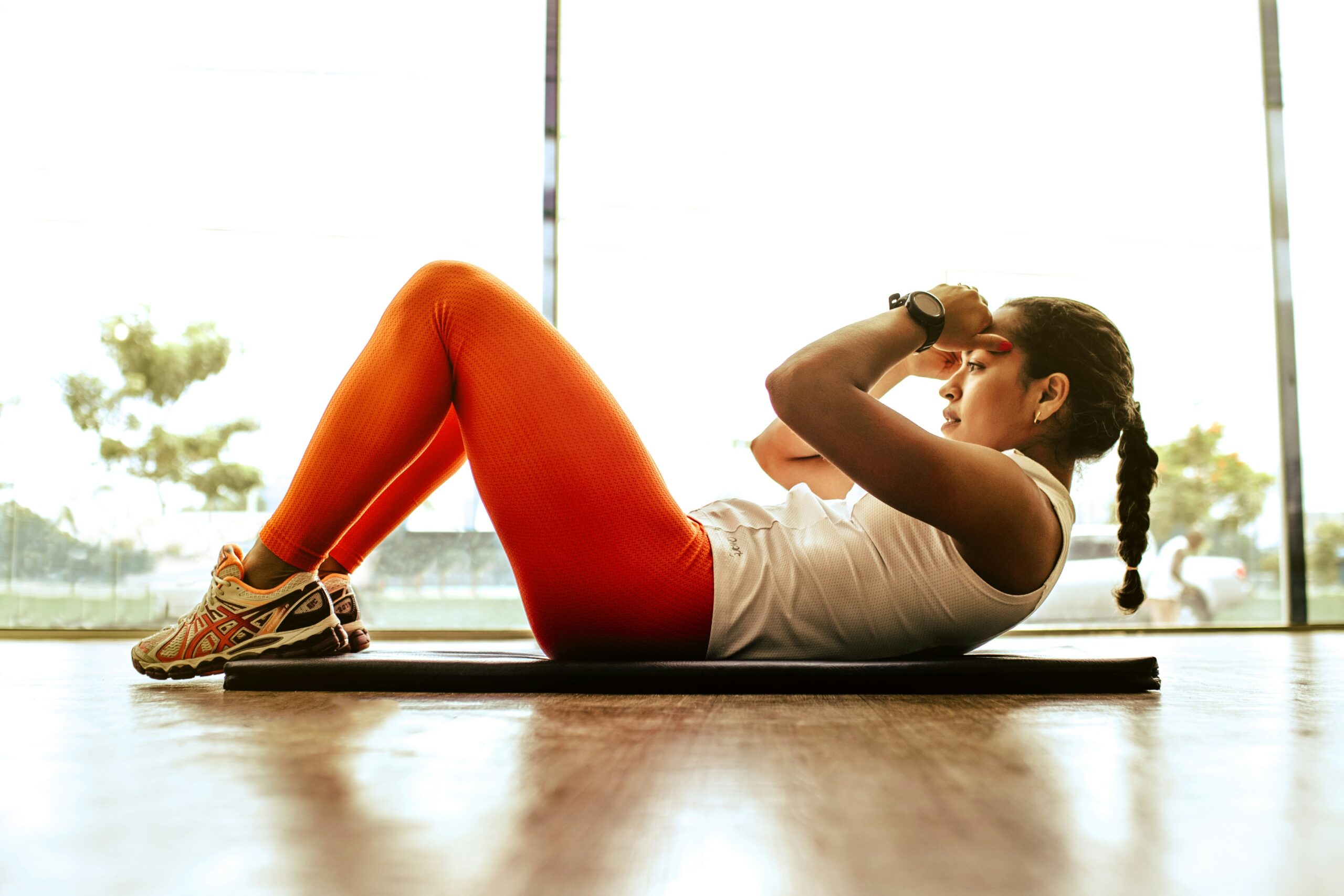Introduction
In the quest for a wholesome and balanced lifestyle, understanding that fitness is more than just a gym session or a brisk run is paramount. Holistic well-being involves a nuanced appreciation of various facets of physical and mental health. To embark on a journey towards comprehensive fitness, one must grasp and embrace the intricacies of the four primary types of fitness. Each type contributes uniquely to an individual’s overall well-being, laying the groundwork for a healthier and more fulfilling life.
In this exploration, we delve into the realms of cardiorespiratory fitness, muscular strength and endurance, flexibility, and body composition. These facets of fitness extend beyond mere physical prowess; they intertwine with mental resilience, emotional balance, and a sense of overall vitality. By comprehending and incorporating these four dimensions into our routines, we open the door to a more complete and sustainable approach to health.
This journey is not merely about counting steps or lifting weights; it’s about cultivating a lifestyle that nourishes the body, mind, and spirit. In the pages that follow, we’ll unravel the significance of each fitness type, exploring the diverse activities and practices that contribute to a well-rounded and flourishing existence. So, let’s embark on this enlightening expedition to understand and appreciate the intricate tapestry of cardiorespiratory fitness, muscular strength and endurance, flexibility, and body composition in our pursuit of a vibrant and balanced life.
Cardiorespiratory Fitness: Elevating Your Heart for a Healthier Life
Cardiorespiratory fitness serves as the foundation of a well-rounded fitness routine, emphasizing activities that elevate your heart rate and breathing over an extended period. Engaging in these exercises not only enhances the efficiency of your cardiovascular system but also delivers a plethora of benefits to your overall well-being.
When we talk about cardio exercises, the options are diverse, catering to different preferences and fitness levels:
- Running or Jogging: A classic choice, promoting cardiovascular health and serving as a potent stress-reliever.
- Cycling: A low-impact alternative, ideal for individuals with joint concerns.
- Swimming: Provides a full-body workout that is gentle on the joints.
- Dancing: Offers a vibrant and enjoyable way to get your heart pumping.
- Jump Rope Exercises: An accessible choice for those seeking a simple yet effective cardio workout.
The benefits of prioritizing cardiorespiratory fitness extend beyond a stronger heart. Regular engagement in aerobic activities contributes to:
- Increased Energy Levels: Aiding in weight management and fostering an enhanced mood.
- Improved Circulation: Facilitating the efficient distribution of oxygen throughout the body.
One of the primary advantages of cardio exercises is the prevention of chronic diseases:
- Reduced Risk of Heart Disease, Hypertension, and Type 2 Diabetes: Regular cardiovascular activity is associated with a lower risk.
- Healthy Blood Pressure Levels: The positive impact on blood circulation helps maintain healthy blood pressure levels.
- Weight Control: The metabolic boost aids in weight management, a crucial factor in preventing obesity-related health issues.
Moreover, cardiorespiratory fitness plays a pivotal role in stress management:
- Endorphin Release: The endorphins released during aerobic activities act as natural mood lifters, reducing stress and anxiety.
- Dual Benefit for Physical and Mental Well-being: Making cardio exercises an integral part of any comprehensive fitness routine.
To incorporate cardiorespiratory fitness into your routine, consider establishing a balance between high-intensity interval training (HIIT) and steady-state cardio:
- High-Intensity Interval Training (HIIT): Involves alternating between short bursts of intense activity and periods of rest, optimizing calorie burn and cardiovascular conditioning.
- Steady-State Cardio: Involves maintaining a continuous, moderate level of intensity for an extended duration.
Whether you choose to lace up your running shoes, hop on a bike, or dive into the pool, the key is consistency. Aim for at least 150 minutes of moderate-intensity cardio or 75 minutes of vigorous-intensity cardio per week, in addition to muscle-strengthening activities on two or more days.
In conclusion, cardiorespiratory fitness is not just about working up a sweat – it’s about fostering a healthier heart, body, and mind. By embracing a variety of aerobic activities and integrating them into your routine, you are not only enhancing your cardiovascular system but also fortifying your overall well-being. So, let the rhythm of your heartbeat guide you on a journey to a healthier and more vibrant life.
Muscular Strength and Endurance: Building a Strong Foundation
Muscular strength and endurance are integral components of a well-rounded fitness routine, forming the foundation for a resilient and functional body. These aspects not only contribute to physical prowess but also play a crucial role in preventing injuries and promoting overall well-being.
Understanding Muscular Strength and Endurance:
- Muscular Strength: This refers to the maximum force a muscle or group of muscles can exert. Engaging in activities that challenge your muscles against resistance, such as weightlifting or resistance training, is key to building muscular strength.
- Muscular Endurance: On the other hand, muscular endurance is the ability of a muscle to perform repetitive contractions over an extended period. It involves sustaining muscle activity without fatigue, allowing for improved performance in various physical activities.
Key Activities for Muscular Strength and Endurance:
- Weightlifting: Incorporating weightlifting into your fitness routine is an effective way to build muscular strength. It involves lifting weights, either through free weights or weight machines, to progressively challenge and strengthen your muscles.
- Resistance Training: Utilizing resistance bands, cables, or bodyweight exercises like push-ups, squats, and lunges can enhance both strength and endurance. These exercises engage multiple muscle groups, promoting overall functional fitness.
- Bodyweight Exercises: Exercises that use your body weight as resistance, such as push-ups and squats, are excellent for building muscular strength and endurance. They can be performed anywhere, making them convenient for individuals with varied fitness preferences.
- Yoga and Pilates: While often associated with flexibility, both yoga and Pilates incorporate exercises that focus on building and toning muscles. The controlled movements in these practices contribute to improved muscular strength and endurance.
Benefits of Muscular Strength and Endurance:
- Increased Metabolism: Building lean muscle mass boosts your metabolism, aiding in more efficient calorie burning. This can be especially beneficial for weight management and achieving a healthy body composition.
- Enhanced Bone Density: Engaging in weight-bearing exercises strengthens not only muscles but also bones. This is crucial for maintaining optimal bone density, reducing the risk of conditions like osteoporosis.
- Improved Posture and Balance: Muscular strength contributes to better posture and balance. Strengthening the core muscles, in particular, helps stabilize the spine and pelvis, reducing the risk of back pain and enhancing overall balance.
- Reduced Risk of Injury: A body with well-developed muscular strength and endurance is more resilient to injuries. Strong muscles provide better support to joints and ligaments, reducing the likelihood of strains and sprains.
- Better Functional Movement: Everyday activities, from lifting groceries to climbing stairs, require muscular strength and endurance. Improving these aspects of fitness enhances your ability to perform daily tasks with ease and efficiency.
Incorporating a variety of exercises that target both muscular strength and endurance into your fitness routine ensures a comprehensive approach to building a strong and resilient body. Remember to progressively challenge your muscles, allowing for adaptation and continued growth. By prioritizing muscular strength and endurance, you lay the groundwork for improved physical performance and a healthier, more functional lifestyle.
Flexibility: A Key Element for Total Well-being
In the realm of fitness, flexibility often takes a back seat to more vigorous activities like cardio or strength training. However, its importance cannot be overstated. Flexibility refers to the range of motion in your joints and muscles, and maintaining good flexibility is integral to achieving overall health and well-being.
Key Activities for Flexibility:
- Stretching exercises (static and dynamic): Stretching is a fundamental component of flexibility training. Static stretches involve holding a position for an extended period, promoting muscle lengthening and joint mobility. Dynamic stretches, on the other hand, involve controlled, repetitive movements that gradually increase your range of motion and improve flexibility.
- Yoga: This ancient practice not only enhances flexibility but also integrates strength, balance, and mindfulness. Yoga poses focus on elongating muscles and increasing joint flexibility, fostering a mind-body connection that goes beyond physical benefits.
- Pilates: While Pilates is renowned for building core strength, it also emphasizes flexibility. The controlled and precise movements in Pilates exercises target specific muscle groups, promoting elongation and flexibility.
- Tai Chi: This ancient Chinese martial art combines slow, flowing movements with deep breathing and mental focus. Tai Chi promotes flexibility by gently working through a full range of motion, improving joint mobility and balance.
Benefits of Flexibility:
- Reduced muscle tension and stiffness: Regular flexibility exercises help alleviate muscle tightness, reducing the risk of discomfort or injury associated with tense muscles. A flexible body is more resilient and less prone to aches and pains.
- Improved posture and alignment: Flexibility plays a crucial role in maintaining good posture. Stretching tight muscles contributes to proper spinal alignment and reduces the strain on joints, promoting a balanced and upright posture.
- Enhanced range of motion: Flexibility training directly correlates with an increased range of motion in joints. Improved flexibility allows for more fluid and efficient movement, whether in daily activities or during exercise, enhancing overall physical performance.
- Decreased risk of injury: Flexible muscles and joints are less susceptible to strains and injuries. By regularly engaging in flexibility exercises, you can condition your body to withstand various physical stresses, reducing the likelihood of accidents during physical activities.
While flexibility may not provide the immediate, visible results that some other forms of exercise do, its long-term benefits are invaluable. Incorporating flexibility training into your fitness routine contributes to the overall harmony of your body and mind. It’s not just about touching your toes or doing a split; it’s about cultivating a body that moves with ease, adapts to challenges, and ages gracefully.
In conclusion, don’t underestimate the power of flexibility in your fitness journey. Embrace a well-rounded approach that includes stretching, yoga, Pilates, or Tai Chi. By doing so, you’ll not only enhance your physical performance but also foster a deep connection between your body and mind, laying the foundation for a healthier and more balanced life.
Body Composition: Striking the Right Balance
In the multifaceted realm of fitness, body composition stands out as a pivotal aspect, emphasizing the proportion of fat and non-fat mass within your body. Achieving and maintaining a healthy body composition is not just about aesthetics; it plays a crucial role in overall health and well-being.
Key Strategies for Managing Body Composition:
- Balanced Diet:
- Focus on a well-rounded diet rich in fruits, vegetables, lean proteins, and whole grains.
- Monitor portion sizes to maintain a healthy calorie balance.
- Limit the intake of processed foods, sugary beverages, and excessive saturated fats.
- Focus on a well-rounded diet rich in fruits, vegetables, lean proteins, and whole grains.
- Regular Exercise:
- Combine cardiovascular exercises with strength training to burn calories and build lean muscle mass.
- Aim for at least 150 minutes of moderate-intensity aerobic activity per week, complemented by muscle-strengthening activities on two or more days.
- Include a variety of exercises to target different muscle groups and promote overall body strength.
- Adequate Hydration:
- Stay well-hydrated to support metabolic functions and promote efficient nutrient transport.
- Opt for water as the primary beverage, limiting the consumption of sugary drinks and excessive caffeine.
- Quality Sleep:
- Ensure you get 7-9 hours of quality sleep each night to support hormonal balance and recovery.
- Lack of sleep can disrupt appetite-regulating hormones, potentially leading to overeating and weight gain.
Benefits of Managing Body Composition:
- Healthy Weight Management:
- Striking the right balance between fat and non-fat mass contributes to maintaining a healthy weight.
- Consistent attention to nutrition and exercise helps prevent unhealthy fluctuations in body weight.
- Reduced Risk of Chronic Diseases:
- Maintaining a healthy body composition is associated with a lower risk of chronic diseases such as heart disease, diabetes, and certain cancers.
- Excess body fat, particularly around the abdominal area, is linked to an increased risk of metabolic disorders.
- Improved Self-Esteem and Body Image:
- Achieving a balanced body composition fosters a positive body image and enhances self-esteem.
- Recognizing the value of overall health over unrealistic beauty standards promotes a more sustainable and fulfilling approach to fitness.
Understanding and actively managing your body composition involves a comprehensive approach that extends beyond mere aesthetics. A balanced diet, regular exercise, hydration, and quality sleep collectively contribute to achieving and maintaining an optimal balance between fat and non-fat mass.
Incorporating nutrient-dense foods into your diet supports overall health and provides the energy needed for physical activities. Exercise, encompassing both cardiovascular and strength-training components, plays a crucial role in burning calories, building muscle, and optimizing metabolic functions.
Hydration and sufficient sleep serve as the pillars supporting these efforts. Hydration aids in digestion, nutrient absorption, and temperature regulation, while quality sleep ensures your body can recover and regenerate effectively.
By adopting these strategies, you not only manage your body composition for aesthetic purposes but also pave the way for a healthier, more resilient body. Remember, the journey to optimal fitness involves a holistic approach that considers not only physical aspects but also mental and emotional well-being. Strive for balance, make informed choices, and embrace the transformative power of a well-rounded approach to fitness.
Putting it all together to create a healthy lifestyle
In summary, embracing a holistic approach to fitness involves acknowledging and prioritizing the four essential types of fitness. Cardiorespiratory fitness, muscular strength and endurance, flexibility, and body composition collectively create a well-rounded foundation for overall well-being. By incorporating diverse exercises into your routine, you not only enhance physical health but also contribute to mental and emotional resilience.
Stick with us for more in-depth articles on all of the above subjects and more, including specific techniques, workout plans, nutrition advice, and product reviews. If you’re looking to get started right away, check out the following articles
Fitness


